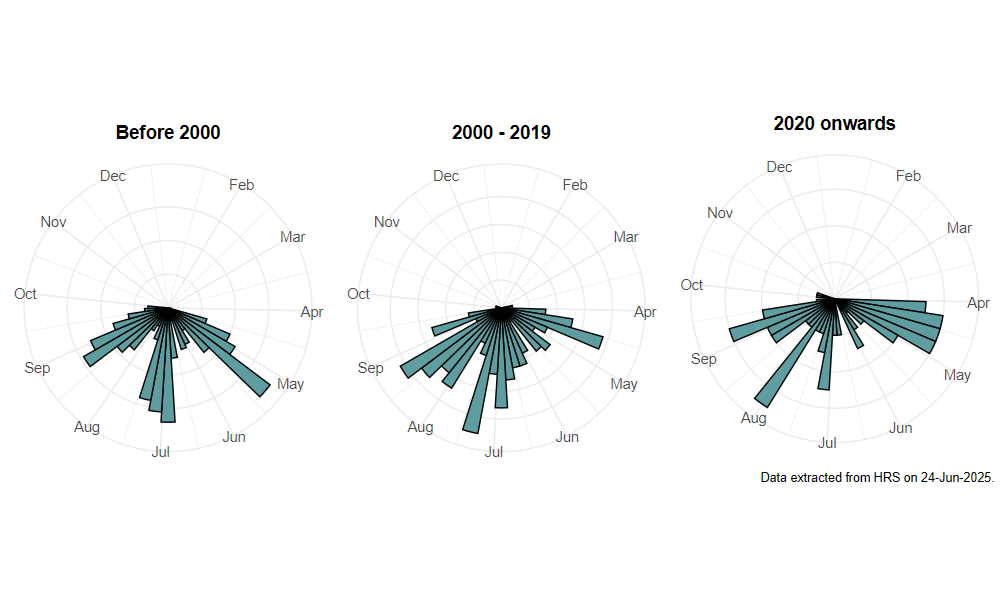Cheilosia latifrons (Zetterstedt, 1843)
Identification
Identification difficulty = 4. ![]()
![]() according to Ball & Morris, 20241
according to Ball & Morris, 20241
Synonymy
Cheilosia intonsa Loew in Stubbs & Falk (1983)2.
Biology
The larva of this species remains unknown, but it is thought to be associated with Autumn Hawkbit Leontodon autumnalis. Adults are found in dry grassland, including coastal grassland and dunes, where they fly low amongst the vegetation. According to Speight (2017)3 they visit yellow composites, Ranunculus, and anaemophilus flowers such as plantains Plantago sp. and woodrushes Luzula sp.
Flight period
The following plots show the number of unique records per week excluding those reported to be of immature stages.

Distribution
This species is widely distributed throughout Britain but records are highly scattered and offer no obvious pattern apart from a general increase in density in southern England. Records from Scotland suggest that favoured habitats are well-drained sandy acid localities.

Trends
The following plots show the Frescalo TFactor vs year and a map of the rescaled frequency (all records) for the species.
-
Ball, S., & Morris, R. (2024). Hoverflies of Britain and Ireland. WILDGuides (3rd ed.). Oxford: Princeton University Press. ↩
-
Stubbs, A., & Falk, S. (1983). British Hoverflies: An Illustrated Identification Guide (1st ed.). Reading: BENHS. ↩
-
Speight, M. (2017). Species accounts of European Syrphidae ( No. 97). yrph the Net, the database of European Syrphidae (Diptera) (p. 294). Dublin: Syrph the Net publications. Retrieved from https://pollinators.ie/wordpress/wp-content/uploads/2018/05/StN-2017-Species-Accounts.pdf ↩